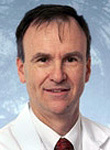| Home News and Events |

|
eCardioVascular BeatReducing radiation exposure from cardiac testing
Douglas Dawley, M.D.
Cardiology, Providence Portland Medical Center A New York Times article in 2007 pointed out that diagnostic imaging procedures have replaced natural background ionizing radiation as the largest source of human exposure. From 1980 to 2006, the per-capita dose of radiation from clinical imaging exams increased 600 percent. CT scans increased from 3 million to 62 million, and nuclear cardiac stress tests increased from 6.4 million to 18 million during this time. “The importance of radiation exposure is that it poses a cumulative and linear cancer risk for patients.”An Emory University School of Medicine The importance of radiation exposure is that it poses cumulative and linear (stochastic, or no threshold) cancer risks for patients. A study by Columbia University Medical Center (NEJM, 2009) claims that 2 percent of all cancers are due to CT scanning. Japanese atomic bomb survivors were noted to have increased risk of cancer when the radiation exposure exceeded 50 mSv (millisieverts). This dose of radiation could potentially be exceeded by just one nuclear study plus PCI in the right patient! A radiation exposure of >20 mSv is considered high, and 3 to 20 mSv is considered moderate. However, many factors influence a test’s radiation dose to the patient, as well as the patient’s risk from that dose. For example, not only is the size of the dose important, but so is the rate of delivery, the part of body exposed, the type of radiation, as well as the size, age and health of the patient. This table outlines the effective dose of radiation from some common tests and procedures:
To better understand a patient’s cumulative radiation exposure, and to allow physicians to make safer test choices, some hospitals are highlighting these tests and procedures along with their radiation exposure in the EMR. Since ultrasound and MRI do not use radiation, tests that use these modalities may be safer choices. For example, if a patient can physically walk on a treadmill, then either a standard TM or an exercise echo could be done with no radiation exposure in a patient with high cumulative radiation exposure. Likewise, in the cath lab there are many techniques that reduce radiation exposure and should be consistently used:
ConclusionIn summary, the key to decreasing radiation exposure is to account for such exposure, transparently, to patients and to all physicians caring for that patient. When a patient has been exposed to high cumulative levels of radiation, or when a test or procedure has alternatives that don’t involve radiation, these need to be considered. Finally, physicians and staff working in cath labs should diligently choose technique options that minimize radiation exposure. |
||||||||||||||||||||||||
|
||||||||||||||||||||||||
|
Copyright © 2024 Providence Health & Services. All rights reserved. Clinical Trials | Quality and Outcomes | News and Events | About Us | Contact Us | Make a Referral |
||||||||||||||||||||||||